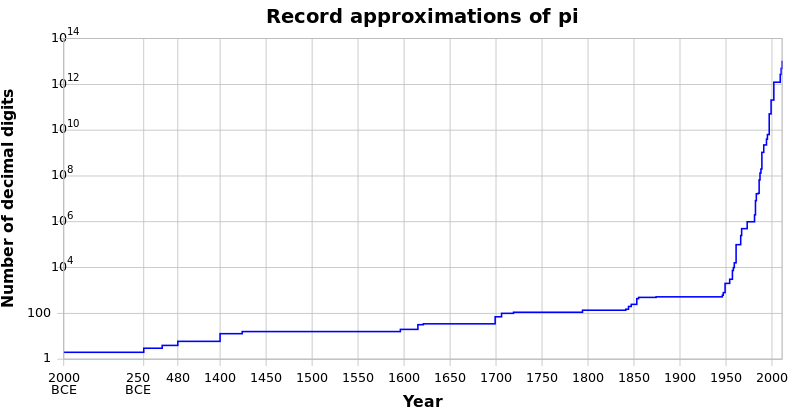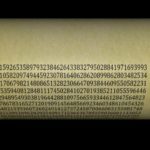Last week I had the opportunity to present the venture of calculating π with a world record accuracy to my colleagues at Dectris. Within twenty minutes I tried to give an overview of the intriguing project, which is just a small contribution to the long history of computing pi with ever increasing accuracy.
History of computing pi
As shown in the figure below, only 527 digits of π have been known one hundred years ago. After some records by D. F. Ferguson using a desk calculator, in 1949 the famous ENIAC computer started a new period with an exponentially increasing number of known digits. In the year 2002, the number of known digits of pi for the first time exceeded the limit of one trillion decimal digits. With the foreseeable end of Moore’s law, it will be interesting to follow the development over the next years.

Summary of computing pi to 22.4 trillion digits
I started the talk to my colleagues at Dectris with an explanation of the math used for the computation. In particular, I presented the Chudnovsky series and Bellard’s formula. In the second part I reviewed the server and the custom storage, which were crucial to achieve the goal within a feasible amount of time. Alexander Yee’s y-cruncher with its massive adoption of concurrency was the topic of the next part. Finally I presented some of the new digits and discussed whether the result conforms with the hypothesis of π being a normal number.
Slides
If you would like to have a look at the slides of my presentation, please follow this link.






Comments by Pipi